Introduction
Welcome to the enchanting world of the purple herb, a hidden treasure of nature that has been captivating hearts and minds for centuries. In this comprehensive guide, we will delve deep into the realms of the purple herb, exploring its origins, diverse uses, and the myriad of benefits it offers. From culinary delights to therapeutic wonders, the purple herb has something for everyone.
The Purple Herb Unveiled
What is Purple Herb?
Purple herb, also known as Lavandula angustifolia, is a fragrant and vibrant herb that belongs to the mint family, Lamiaceae. With its stunning violet-colored flowers and aromatic leaves, it has been a beloved herb in various cultures around the world.
The History of Purple Herb
This ancient herb boasts a rich history dating back to the Roman era. It was commonly used by the Romans for its calming properties and delightful fragrance. Over time, its uses expanded, making it a staple in herbal remedies, perfumes, and even culinary creations.
Cultivation and Varieties
Purple herb is a hardy plant that thrives in well-drained soil and plenty of sunlight. There are several varieties of purple herb, each with its unique characteristics and uses. Common varieties include English lavender, Spanish lavender, and French lavender, with subtle differences in appearance and scent.
Herbs With Purple Flowers
Lavender
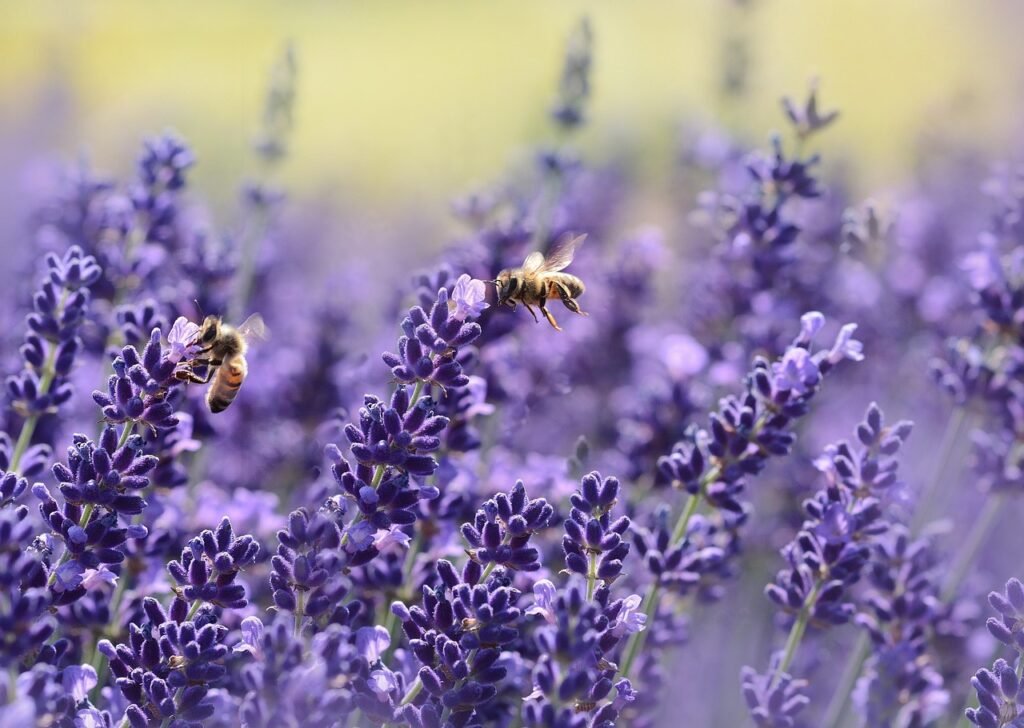
- Botanical Name: Lavandula angustifolia
- Hardiness Rating: Zones 5-9
- Flowering Season: Late spring to early summer
- Ideal Conditions: Well-drained soil, full sunlight, and a dry, Mediterranean-like climate.
Lavender, with its soothing scent and delicate purple blossoms, is a timeless herb cherished for its calming aroma and versatile applications. It’s a culinary delight, an essential aromatherapy ingredient, and a symbol of relaxation.
Rosemary
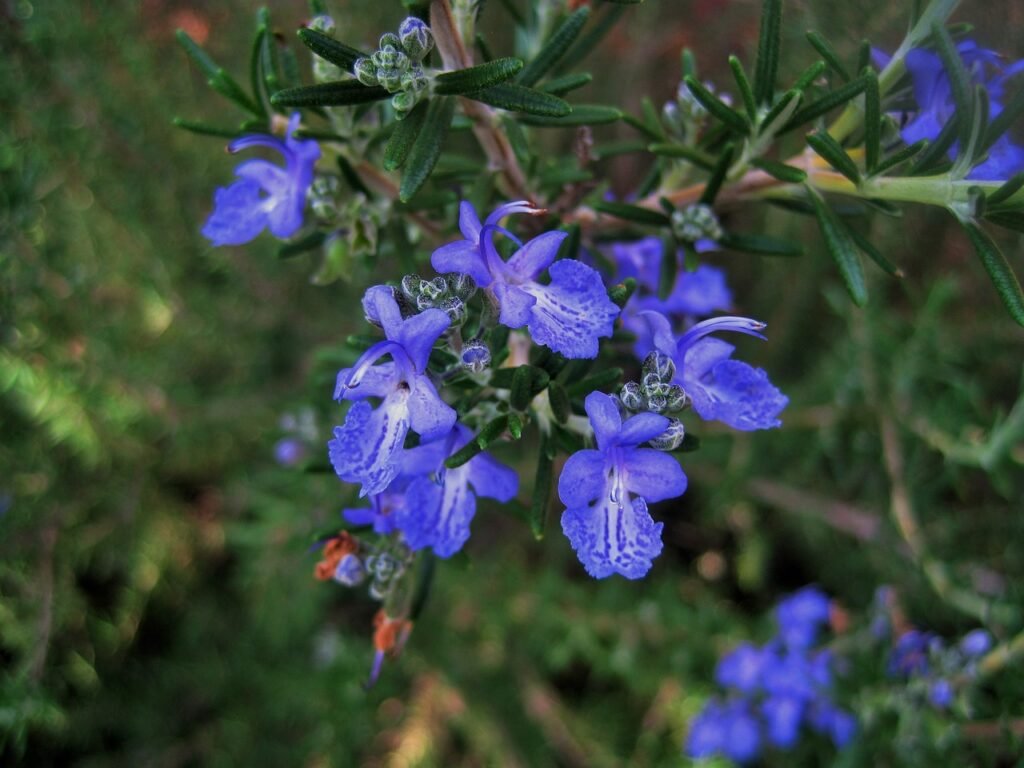
- Botanical Name: Rosmarinus officinalis
- Hardiness Rating: Zones 8-10
- Flowering Season(s): Spring, sporadically throughout the year
- Ideal Conditions: Well-drained soil, full sunlight, and minimal water. Suited for arid or coastal regions.
Rosemary, though known for its aromatic green leaves, surprises with its striking blue-purple flowers. This herb elevates culinary creations with its earthy flavor and adds a touch of elegance to garden landscapes.
Basil

- Botanical Name: Ocimum basilicum ‘Purple Ruffles’
- Hardiness Rating: Annual (grown as an annual in most regions)
- Flowering Season(s): Late summer
- Ideal Conditions: Well-drained soil, full sunlight, and consistent moisture. Usually grown as an annual.
Purple basil, with its deep-hued, crinkled leaves, not only infuses dishes with a subtly sweet and peppery flavor but also enchants the eye. It’s a culinary gem that elevates salads and pestos.
Sage
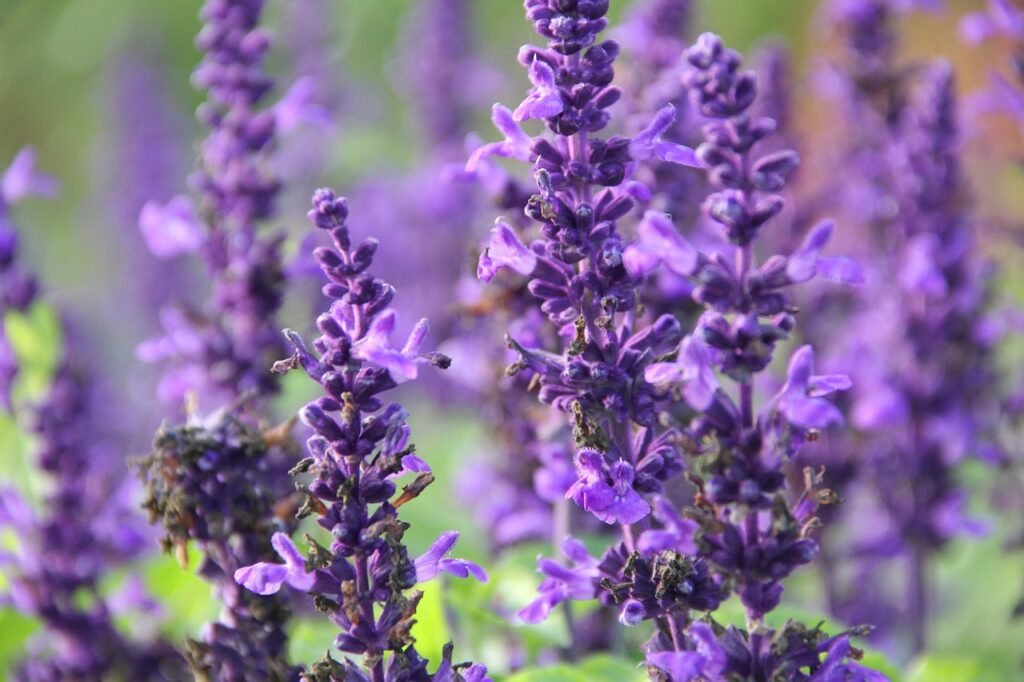
- Botanical Name: Salvia officinalis ‘Purpurascens’
- Hardiness Rating: Zones 5-8
- Flowering Season(s): Late spring to early summer
- Ideal Conditions: Well-drained soil, full sunlight, and minimal water. A hardy perennial herb.
Purple sage, with its velvety purple foliage, is the epitome of garden beauty. It’s a flavor powerhouse, lending its earthy, savory notes to holiday stuffing and culinary creations while adding a touch of elegance to any herb garden.
Thyme
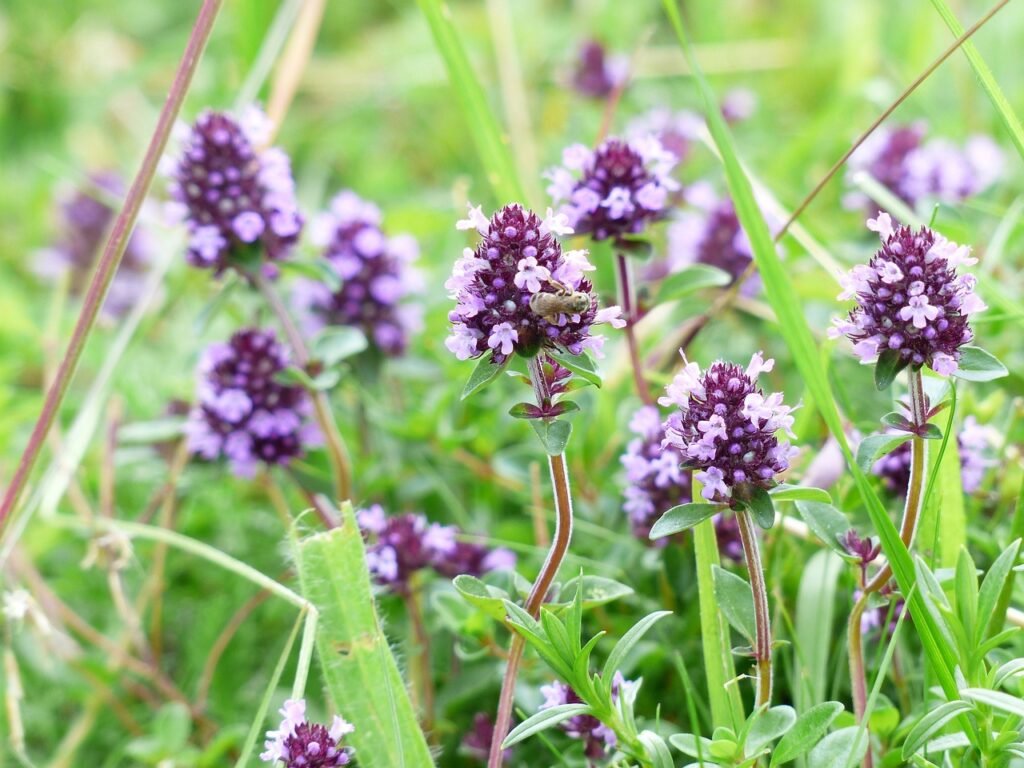
- Botanical Name: Thymus vulgaris ‘Purple Creeping Thyme‘
- Hardiness Rating: Zones 4-9
- Flowering Season(s): Early to mid-summer
- Ideal Conditions: Well-drained soil, full sunlight, and moderate water. Excellent ground cover
Creeping thyme’s lavender-hued flowers cascade gracefully, making it an enchanting ground cover in gardens. Its aromatic leaves offer a savory flavor, making it a culinary favorite.
Catmint
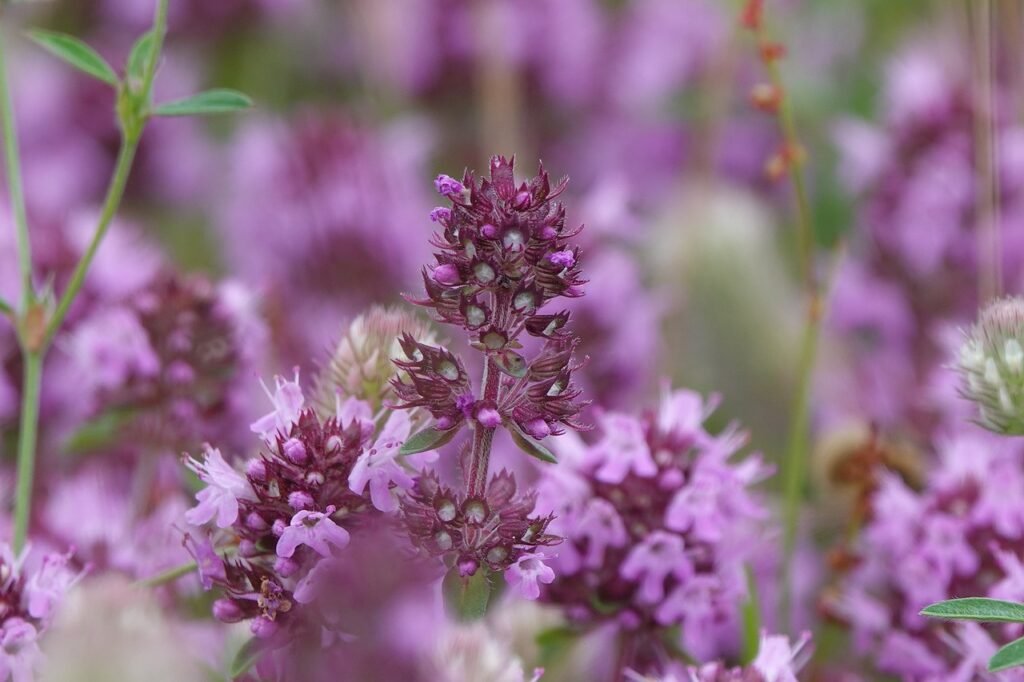
- Botanical Name: Nepeta x faassenii ‘Walker’s Low’
- Hardiness Rating: Zones 3-8
- Flowering Season(s): Late spring to early summer
- Ideal Conditions: Well-drained soil, full sunlight, and drought-tolerant once established.
Catmint’s profusion of purple-blue blooms not only attracts pollinators but also adds a delightful fragrance to your garden. It’s a low-maintenance herb that’s both ornamental and aromatic.
Chives

- Botanical Name: Allium schoenoprasum
- Hardiness Rating: Zones 3-9
- Flowering Season(s): Late spring to early summer
- Ideal Conditions: Well-drained soil, partial to full sunlight, and regular moisture.
While chives boast green leaves, their edible purple flowers provide a delightful, mild onion flavor, making them a versatile addition to salads and garnishes.
Anise Hyssop

- Botanical Name: Agastache foeniculum
- Hardiness Rating: Zones 4-9
- Flowering Season(s): Mid to late summer
- Ideal Conditions: Well-drained soil, full sunlight, and moderate water.
With its striking purple spikes and anise-like taste, anise hyssop is not only a pollinator magnet but also a flavorful addition to teas and desserts.
Mint

- Botanical Name: Various species (e.g., Mentha x piperita for peppermint)
- Hardiness Rating: Zones vary by species (e.g., Zones 3-11)
- Flowering Season(s): Summer
- Ideal Conditions: Well-drained soil, partial to full sunlight, and regular moisture. Varieties like chocolate mint have purple stems or leaves.
Varieties like chocolate mint surprise with their purple stems or leaves, offering a refreshing twist to the classic minty flavor. They’re perfect for refreshing beverages and culinary experiments.
Oregano

- Botanical Name: Origanum vulgare ‘Hopleys’
- Hardiness Rating: Zones 5-9
- Flowering Season(s): Summer
- Ideal Conditions: Well-drained soil, full sunlight, and moderate water. The purple-leaved variety is used for its aroma and flavor.
Oregano’s purple-leaved varieties are a visual treat in herb gardens. Their leaves provide the unmistakable spicy aroma and flavor essential in Mediterranean cuisine.
Society Garlic

- Botanical Name: Tulbaghia violacea
- Hardiness Rating: Zones 7-11
- Flowering Season(s): Late spring to summer
- Ideal Conditions: Well-drained soil, full sunlight, and moderate water. Known for its mild garlic flavor.
Society garlic’s clusters of purple flowers add a splash of color to garden beds, while its mild garlic flavor makes it an excellent addition to salads and spreads.
Russian Sage
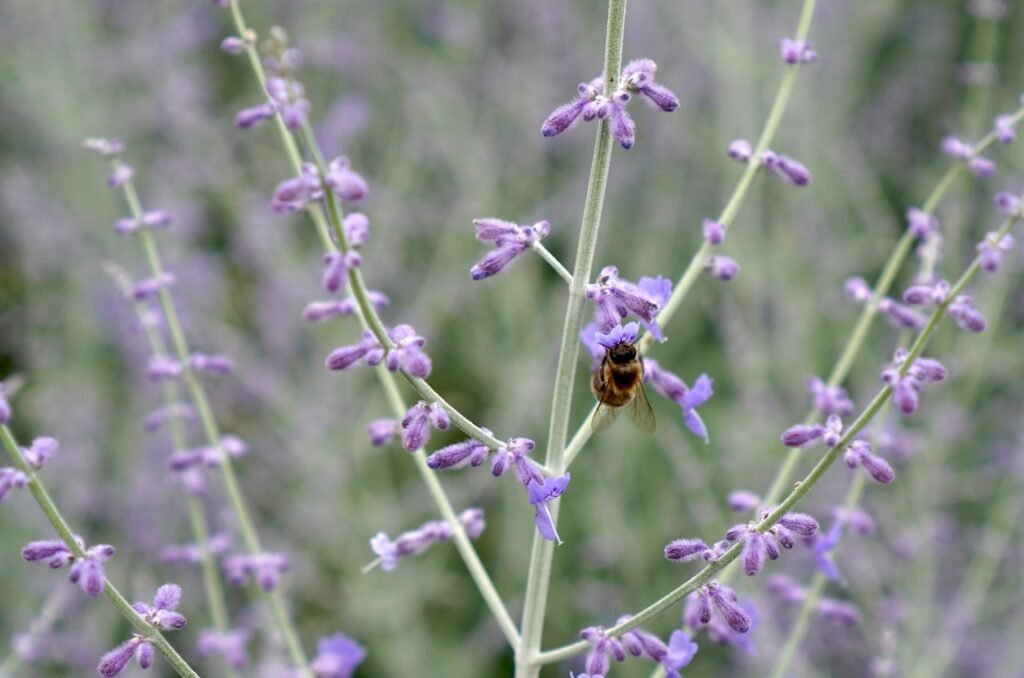
- Botanical Name: Perovskia atriplicifolia
- Hardiness Rating: Zones 4-9
- Flowering Season(s): Late summer to fall
- Ideal Conditions: Well-drained soil, full sunlight, and drought-tolerant. Adds grace to landscaping.
With its tall spikes of lavender-blue flowers, Russian sage adds a touch of grace to landscaping, making it a favorite among garden enthusiasts.
Lemon Balm
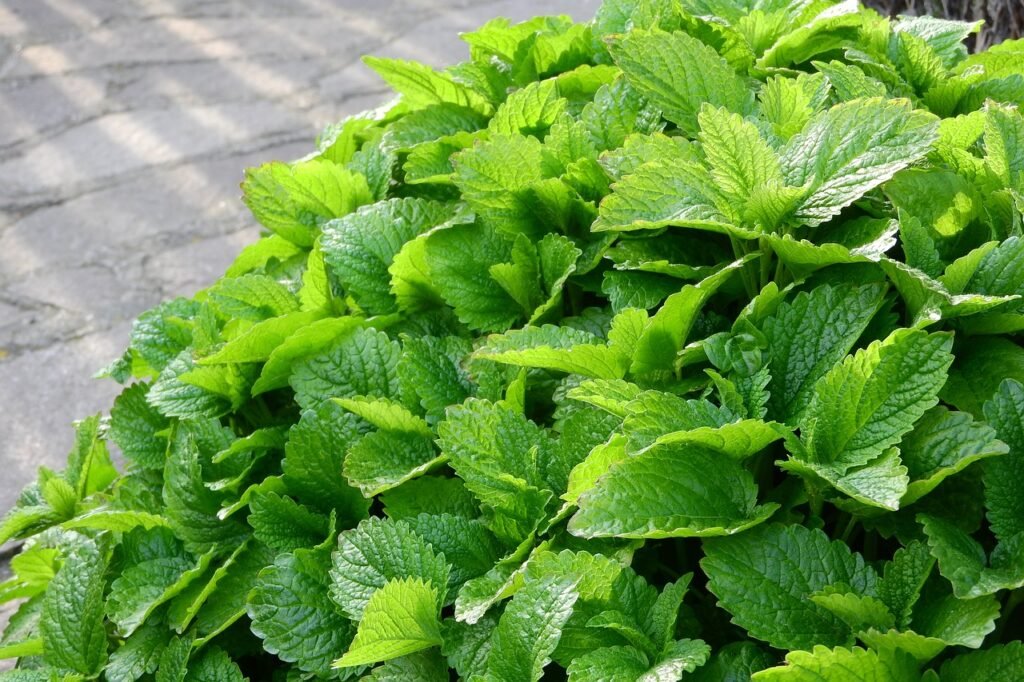
- Botanical Name: Melissa officinalis ‘All Gold’
- Hardiness Rating: Zones 4-9
- Flowering Season(s): Summer
- Ideal Conditions: Well-drained soil, partial sunlight, and regular moisture. Offers a lemony aroma and flavor.
Lemon balm’s yellow and purple foliage is a visual delight. It imparts a refreshing lemony aroma and flavor, perfect for herbal teas and desserts.
Liatris

- Botanical Name: Liatris spicata
- Hardiness Rating: Zones 3-8
- Flowering Season(s): Mid to late summer
- Ideal Conditions: Well-drained soil, full sunlight, and attracts pollinators. Known as “gayfeather.”
Liatris, also known as “gayfeather,” stands tall with its vibrant purple spikes, creating a wildflower spectacle in gardens and attracting pollinators.
Borage

- Botanical Name: Borago officinalis
- Hardiness Rating: Zones 2-11 (usually grown as an annual)
- Flowering Season(s): Late spring to early summer
- Ideal Conditions: Well-drained soil, full sunlight, and self-seeding. Features star-shaped, blue-purple blossoms.
Borage’s star-shaped, blue-purple blossoms are not just eye-catching but also edible, making them a unique addition to salads and beverages.
Perilla
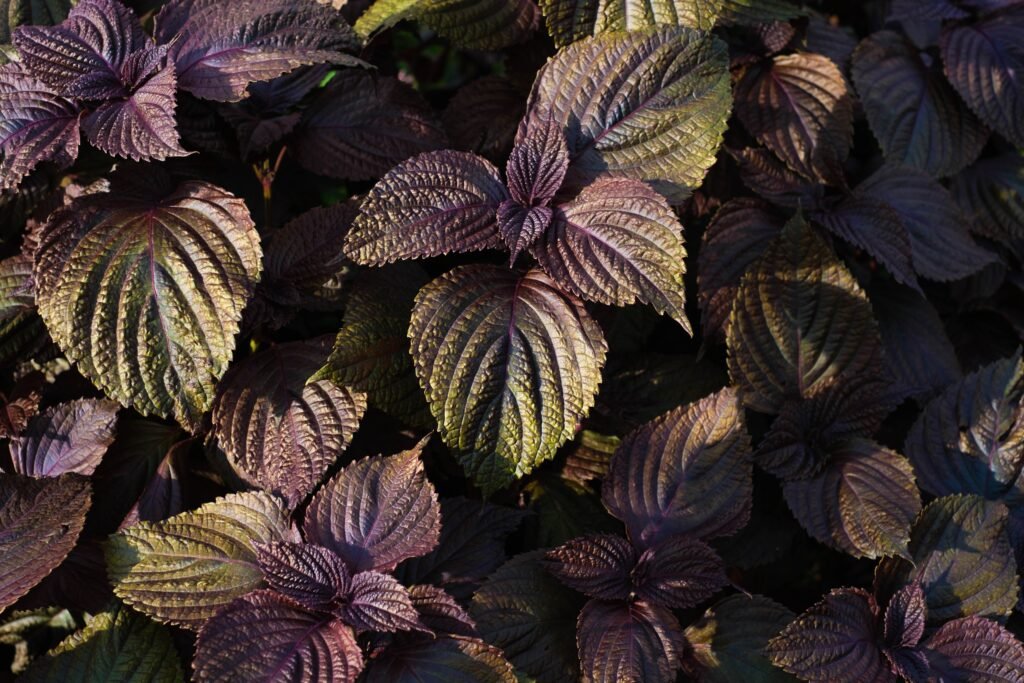
- Botanical Name: Perilla frutescens
- Hardiness Rating: Zones vary by variety
- Flowering Season(s): Summer to fall
- Ideal Conditions: Well-drained soil, full sunlight, and regular moisture. Known as shiso in Asian cuisine.
Purple perilla, or shiso, brings an Asian twist with its distinct flavor and vibrant hue, elevating sushi, salads, and culinary experiments.
Salvia

- Botanical Name: Various species (e.g., Salvia nemorosa for meadow sage)
- Hardiness Rating: Zones vary by species
- Flowering Season(s): Summer to fall
- Ideal Conditions: Well-drained soil, full sunlight, and attracts pollinators. Adds elegance to gardens.
Salvia varieties with purple flowers add elegance to gardens and provide nectar for pollinators, making them a beautiful and ecologically valuable choice for landscaping.
The Versatile Uses of Purple Herb
Culinary Delights
Purple herb isn’t just visually appealing; it also adds a burst of flavor to various dishes. Its delicate, floral notes make it a popular ingredient in both sweet and savory recipes. From lavender-infused desserts to savory herb rubs, the possibilities are endless.
Aromatherapy and Relaxation
The calming scent of purple herb makes it a go-to choice for aromatherapy. Essential oils derived from this herb are known to reduce stress and anxiety, promote relaxation, and improve sleep quality. Adding a few drops of lavender oil to your bath or diffuser can work wonders.
Medicinal Marvel
Purple herb has numerous medicinal properties. It is often used to alleviate headaches, soothe minor burns and insect bites, and relieve muscle tension. Its anti-inflammatory and antiseptic qualities make it a valuable addition to any natural medicine cabinet.
Beauty and Skincare
The beauty industry has also embraced purple herb for its skincare benefits. Lavender-infused products are known to nourish the skin, reduce acne, and provide a natural glow. Additionally, its soothing properties make it a popular ingredient in facial masks and creams.
Conclusion
In conclusion, the purple herb, with its mesmerizing beauty and incredible versatility, is indeed a gift from nature. Whether you want to enhance your culinary creations, experience relaxation, or harness its healing properties, purple herb has something extraordinary to offer. Embrace the purple herb and unlock its countless treasures for a better, more enriched life.
FAQs about Purple Herb
Is purple herb safe for consumption in food?
Yes, purple herb is safe for culinary use in moderation. However, use it sparingly, as its flavor can be overpowering if not used judiciously.
Can I grow purple herb at home?
Absolutely! Purple herb is easy to cultivate in your garden or even in pots on your balcony. Just ensure it gets plenty of sunlight and well-drained soil.
What are the potential side effects of using lavender oil in aromatherapy?
While lavender oil is generally safe, some individuals may experience skin irritation or allergic reactions. It’s advisable to do a patch test before using it extensively.
Is purple herb effective for anxiety relief?
Yes, purple herb, especially in the form of lavender oil, has been shown to have anxiety-reducing properties. However, consult a healthcare professional for severe anxiety issues.
Can pregnant women use products containing purple herb?
Pregnant women should exercise caution when using lavender products, as excessive use during pregnancy may not be advisable. Consult with a healthcare provider for personalized guidance.
Where can I purchase quality purple herb products?
You can find a wide range of purple herb products online and in local health stores. Ensure you buy from reputable sources for the best quality.





